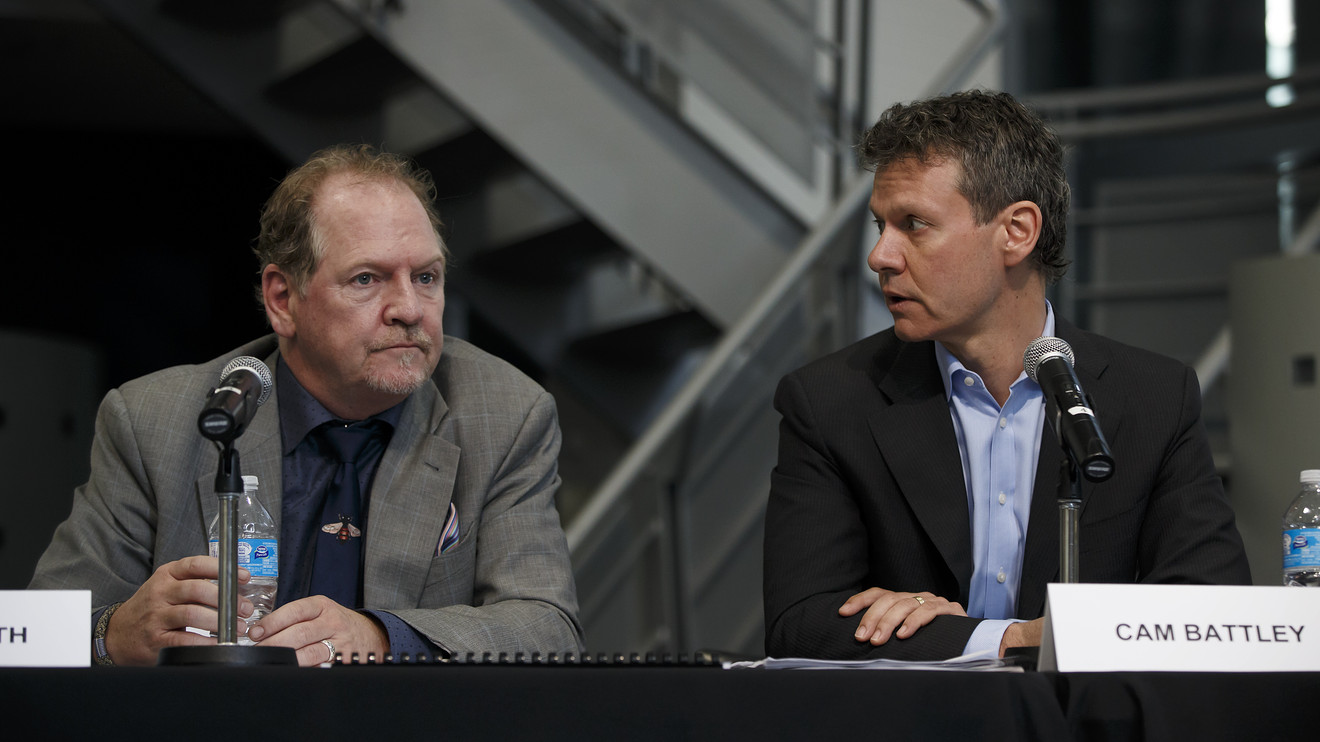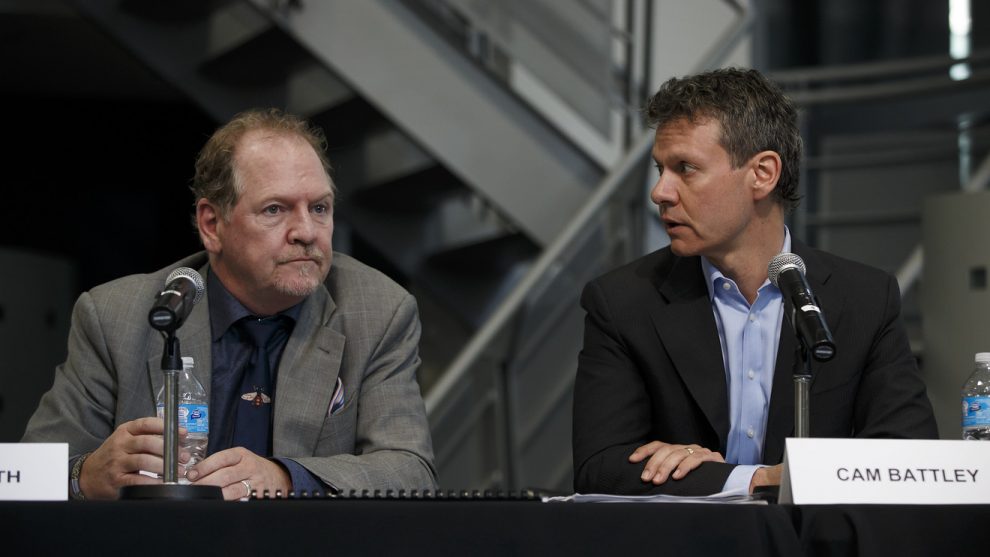
TORONTO — Aurora Cannabis Inc. is one of only two major Canadian cannabis companies with a market value of more than $1.5 billion that has yet to ink a partnership or investment deal with a major U.S. company, but that’s because a rich American advised executives not to do it.
Canopy Growth Corp. CGC, +0.32% WEED, +0.77% paved the way for such deals, singing an agreement with Constellation Brands Inc. STZ, +0.20% , which ultimately invested $4 billion in the Smiths Falls, Ontario, weed producer. Much smaller rival Hexo Corp. HEXO, +0.13% HEXO, +0.77% has signed a joint venture with Molson Coors Brewing Co. TAP, -7.54% , while Cronos Group Inc. CRON, -0.58% CRON, -0.17% opted to take a $1.8 billion investment from Big Tobacco in the form of Marlboro-maker Altria Group Inc. MO, -1.73% . Privateer Holdings-backed Tilray Inc. TLRY, +1.21% is the only other highly valued pot company that has not sold pieces of its business to large, established American companies, but it did make partnership arrangements with Big Pharma and a beverage company.
Several sources in the cannabis industry have suggested that the absence of such a pact for Aurora ACB, -0.88% ACB, -0.49% is conspicuous. But it has not held the company back: Revenue nearly quadrupled in its most recent reported quarter, and the company said it had captured about 20% of Canada’s recreational market.
MarketWatch recently sat down with Aurora’s chief corporate officer, Cam Battley, to talk about why the company hasn’t made a deal with a major U.S. company, as well as his plans for the future and how Aurora is tackling the recreational market in Canada.
Previously: A Q&A with Cronos’s CEO and with Canopy Growth’s quiet co-CEO
The following has been edited for clarity and length.
MarketWatch: Why hasn’t Aurora inked a deal with a major U.S. tobacco, beverage or other company, like your rivals?
Battley: We’ve talked to everybody who have done deals already. We are taking a different approach. We started to get counsel from a very sage source [hedge-fund manager Nelson Peltz] in the United States several months ago, which was in view of some other companies handing control to a larger entity in a mature industry, like Constellation or Altria. In those cases, they’ve got board control of those companies and they’re on the path to majority ownership.
So [Peltz] said “don’t do that” and here’s why: If you sell out now, it’s going to mean selling your shareholders short because the value of your company is rising every quarter. There’s no need to do that. The opportunity exists to create strategic partnerships across more than one vertical. You don’t have to become a tobacco company. You don’t have to become a distiller. You can partner on a strategic level with multiple companies across multiple verticals and remain independent. The key to that is separating in your mind the concepts of strategic partnership and capital raise. There’s no need to assume that those two things go together. If you have sufficient capital, especially if you’re moving into a cash-flow-positive situation as we are in 2019, there’s no need to necessarily combine those two concepts.
I was there with him, along with our executive chairman Michael [Singer] and [Chief Executive] Terry [Booth] and our CFO Glen [Ibbott]. And it was fascinating, because not only did Nelson participate, but he got his entire senior team together and devoted two full days in New York to us and invited in very, very big players into his offices to essentially pitch to us — the biggest financial institutions.
So that’s our strategy: It’s to do things a little bit differently. We do things differently across our business strategy. Cultivation is one where we’re the only one of our peers that’s producing at mass scale, that hasn’t simply rushed into retrofitted greenhouses and millions of square feet. And I think that decision has shown a great payoff thus far. We haven’t faced the kinds of issues that other companies have.
MW: What are some of the shifts in expectations you’re seeing from investors and the market?
Battley: What I’m hearing is that people are really interested in actual, believable estimates of how much cannabis you’re going to have for sale in a quarter, in two quarters, in three quarters. And that’s been a little bit of a credibility problem for some companies. So you know, for now, in this very first era in the cannabis sector, one of the things that is most important to establishing leadership is to be able to produce a lot of cannabis without fail, without crop loss and deliver that predictably, because revenues are tied directly to production. You can say what you like about any of the other aspects of the business, but for now if you can’t produce and sell a large amount of cannabis in a number of different distribution channels — Canadian medical, Canadian consumer and then global medical — you’re not going to be able to compete.
MW: Is Aurora experiencing the production bottlenecks that many of the licensed producers in Canada have publicly talked about?
Battley: Aurora is a standout in the industry. We don’t — we’re not like others, we didn’t have the problems with logistical issues around the initial consumer launch. People kept complaining, “Well, we couldn’t get tax stamps” — we had a plan A, B, C, D, we had backup plans. And I think that’s one of the reasons why we came out of the gate so fast in the consumer system.
We knew that there were going to be issues. We had multiple backup plans to make sure that we could get the keep the product out the door, you know. And so I heard some of the other CEOs complaining about the excise-tax stamps, but we didn’t — it was not a serious challenge for us. Well, it’s not that it wasn’t a challenge — it was a surmountable challenge.
MW: What do you make of the rising cannabis inventory numbers? Why are companies stockpiling cannabis?
Battley: We’re not building up massive inventories because we know that we can sell every gram and gram equivalent that we produce. It’s not that there aren’t logistical operational challenges along the way. It’s just that thus far — touch wood — we’ve been able to resolve them.
But I think that when you see the rising inventory numbers, I think you’re seeing perhaps three things, and I’ve been hearing this across the sector. One is, perhaps, there is some of that product that’s not salable, the quality is not particularly good — the cannabinoid levels may not be there and so it’s being held for future extraction. Two, is that you’ve got to bear in mind there’s a lag time after you harvest product before it hits the market. For us, it’s about 10 days to get flower into the medical cannabis system in Canada, to maybe 45 days for something like a soft gel to get into the consumer system. So there is that lag time, so you do see how reported inventory levels rise before they actually get sold into the system. The third consideration is companies across the sector that have sufficient production, maybe holding some back so that they have it ready for extraction and creation of derivative products.
MW: What brought you to Aurora instead of some of its competitors? [Prior to Aurora, Battley ran a health-management consulting company that has worked in biotechnology, pharmaceuticals and medical devices, and helped develop a law that protects patents for new pharmaceuticals as a legislative assistant.]
Battley: Chief Executive Terry Booth was one of the two reasons why I chose to come to Aurora. I had offers from multiple licensed producers — as it turned out, Medreleaf [which Aurora acquired in 2018] was one of them. Of all the CEOs in the industry, and I knew them all through the industry association, he was the one who saw a global opportunity right from the very beginning. His energy was high. And I believe that his strategic vision at the time was the sharpest and most on-point of any CEO in the industry. I think he’s been proven right. One example of that is that commitment to purpose-built facilities and also indoor production.
The other thing that persuaded me, when Aurora was on nobody’s radar screen, was that purpose-built facility, Aurora Mountain, north of Calgary. It’s just a 55,000-square-foot facility, which at the time was considered pretty big. But it was the first purpose-built cannabis-production facility in the world. And that made sense to me as a guy coming from the biopharmaceutical industry, built to GMP standards. That was novel and made sense to me, given my whole career.











